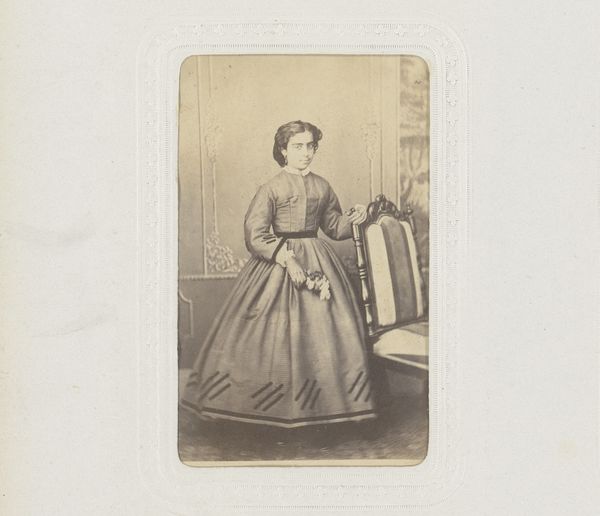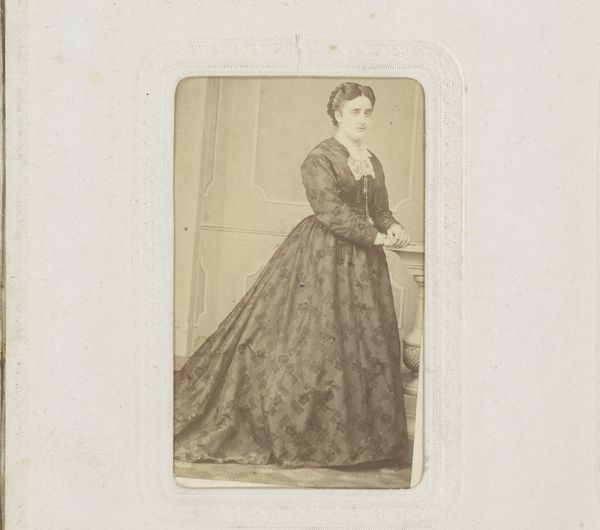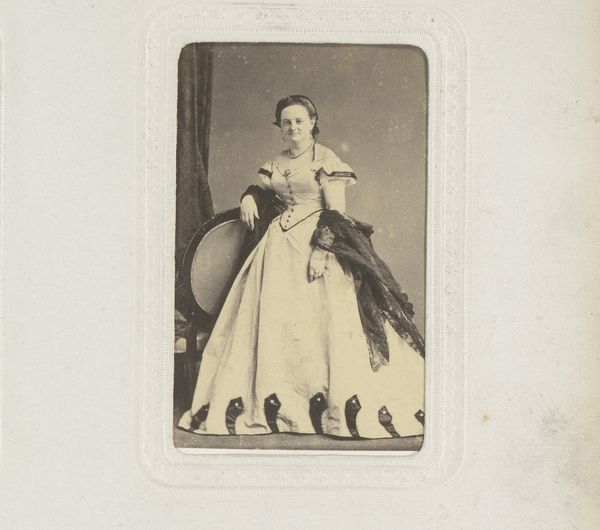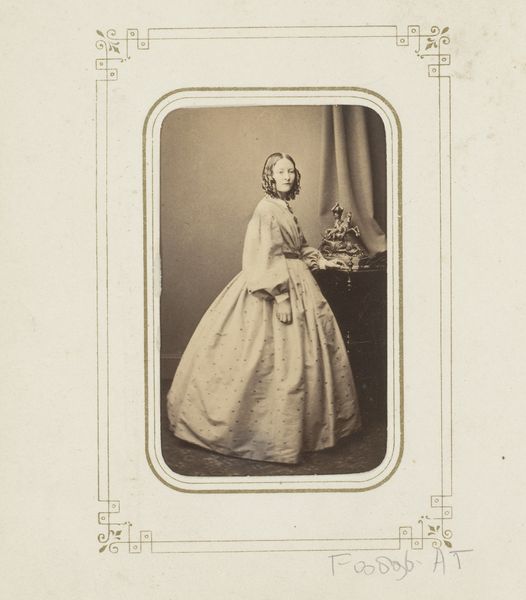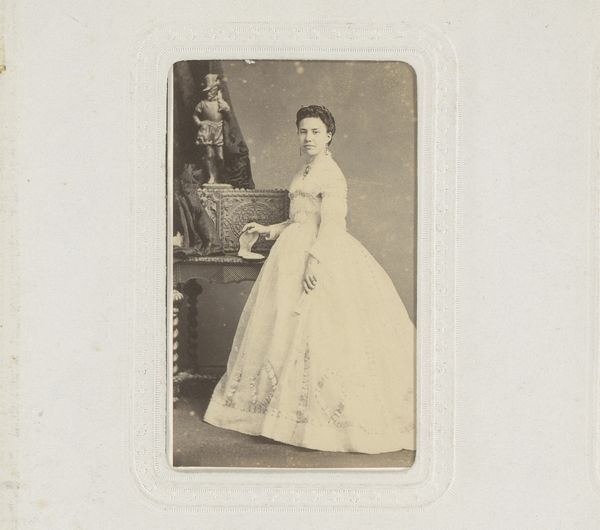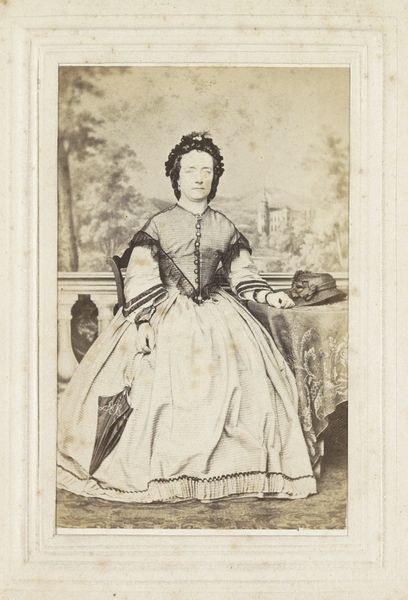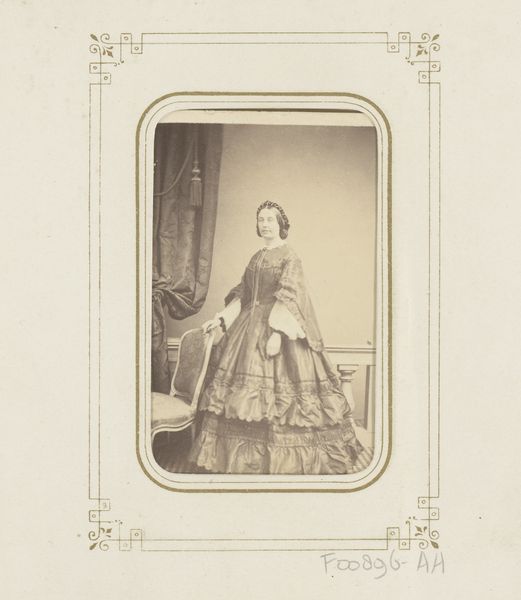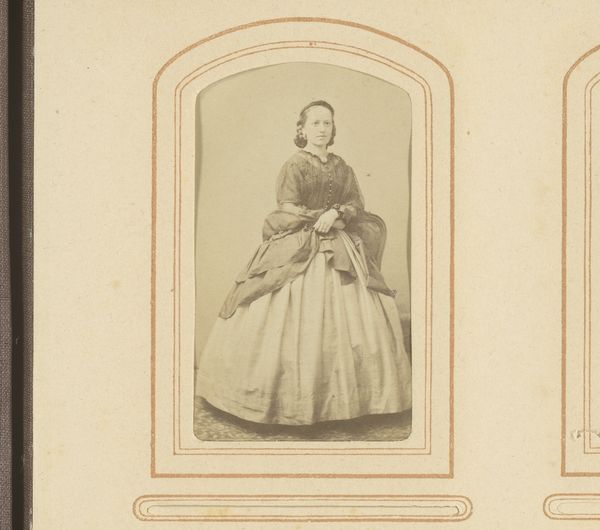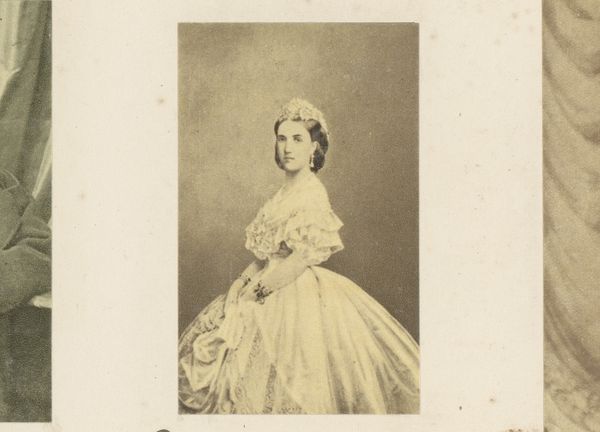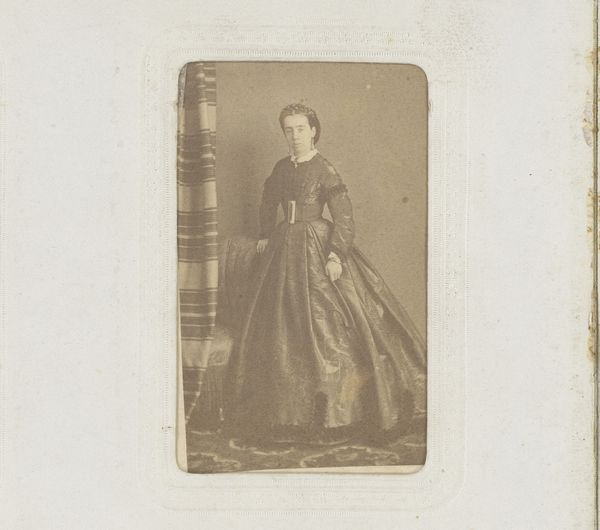
Dimensions: 8.6 × 5.5 cm (image/paper); 10 × 6.3 cm (mount)
Copyright: Public Domain
Editor: Here we have "The Empress of Austria," a photograph from the 1860s. It’s an albumen print currently held at The Art Institute of Chicago. It's a portrait that somehow feels both intimate and incredibly distant. The frills and the stillness create this very controlled and untouchable image. What do you see when you look at this portrait? Curator: Oh, that stillness, it whispers volumes, doesn’t it? Imagine, if you will, stepping into that era, the 1860s – a world grappling with nascent photography and rigid social structures. This isn’t just a portrait; it's a performance, a carefully constructed image of power and grace. It reminds me a bit of a Jane Austen novel; underneath the frothy dress and posed composure, what tensions do you think are simmering? Editor: I guess I hadn't thought about the tensions so much. It seemed mostly serene. Maybe even sad? Curator: Sadness is a lovely entry point. Consider the Empress Elizabeth, known as Sisi; her life was hardly a fairytale. The photograph, an albumen print – painstakingly produced – served as propaganda, a constructed reality. Note how her dress, all frills and lace, creates a barrier, emphasizing her separation from the viewer, from her people, perhaps even from herself. Photography, then, becomes this intriguing dance between truth and fabrication. Don’t you think? Editor: So, it's a document but also a fiction in some ways? I see what you mean about the barrier – she's right there, but so inaccessible. Curator: Exactly! The camera promised reality, but early photographers crafted their images. Perhaps Sisi, trapped by her role, found herself performing even in a ‘realistic’ photograph. We read her face searching for authentic expression. Knowing something about the world in which it was made adds another layer of complexity and emotional power. I hadn’t considered her potential sadness quite like that. It adds another interesting layer to my appreciation. Editor: This has totally shifted my perspective on portraits – the fiction and performance behind them, not just the 'truth.' Thanks!
Comments
No comments
Be the first to comment and join the conversation on the ultimate creative platform.



